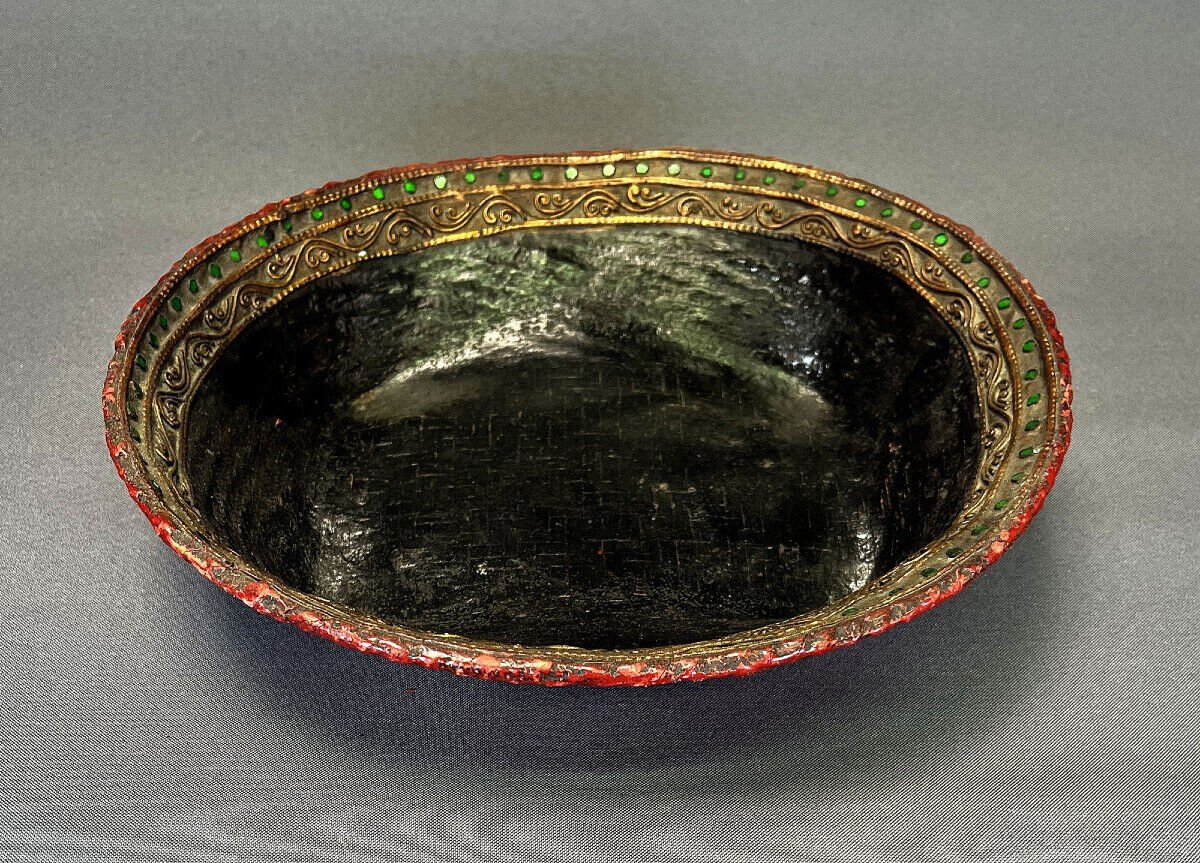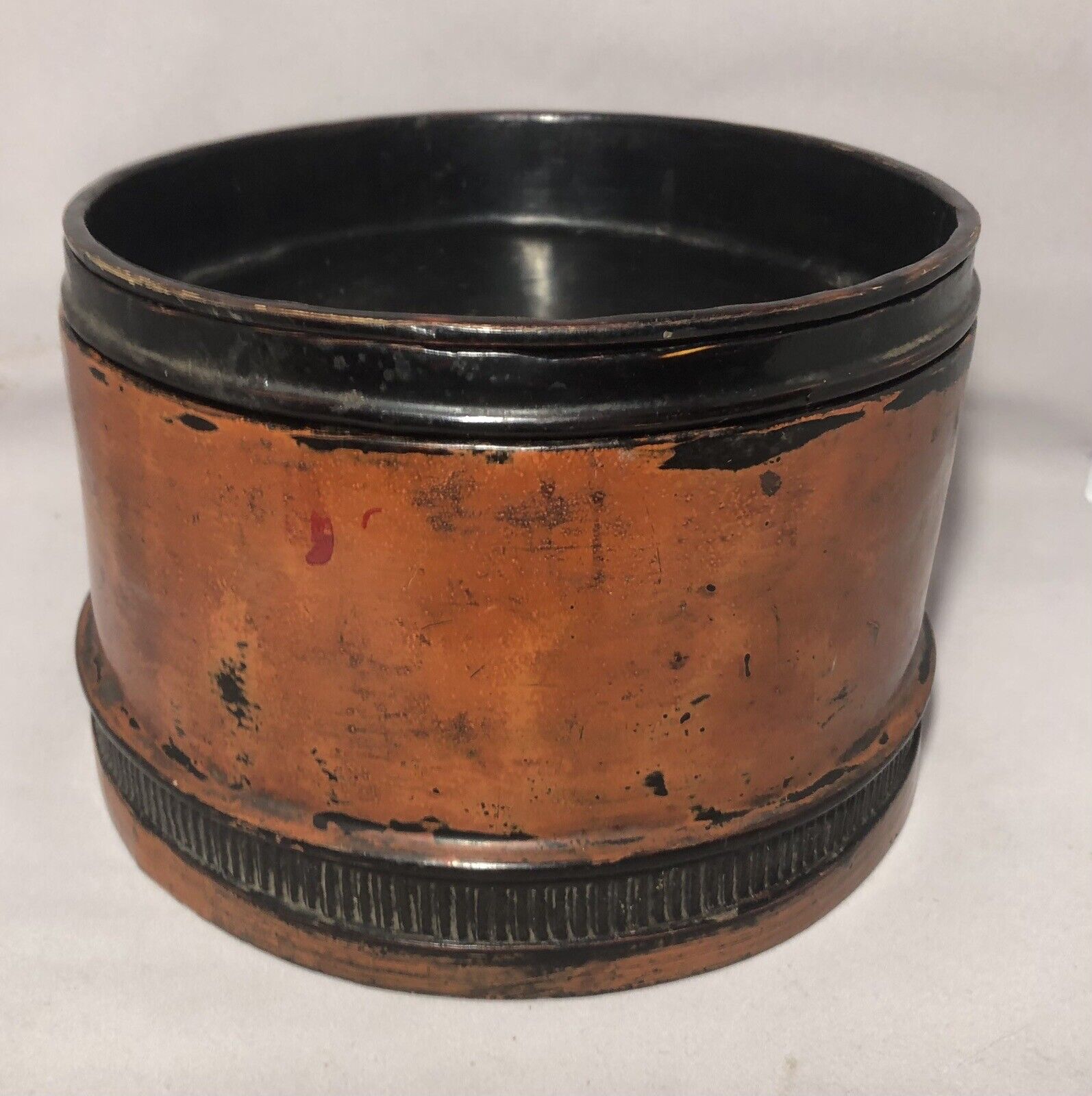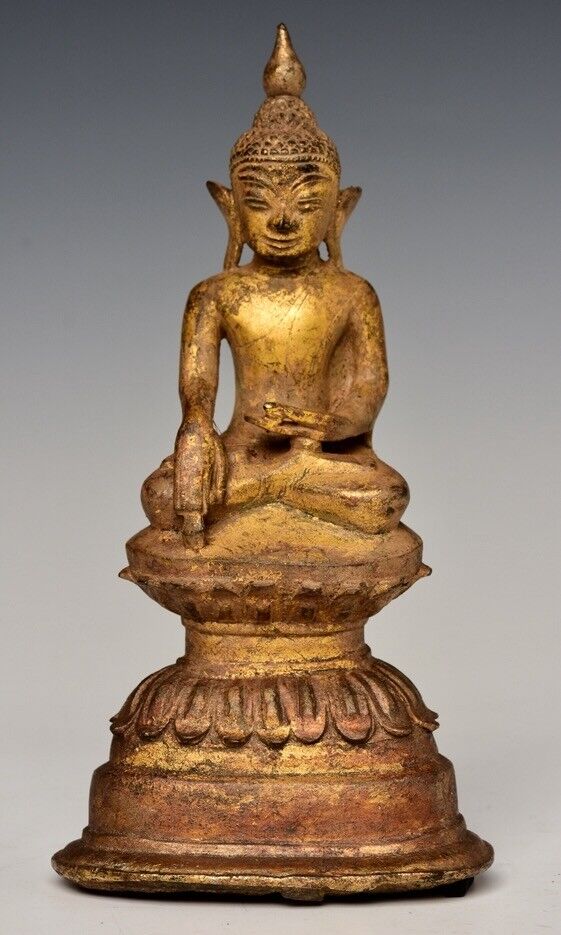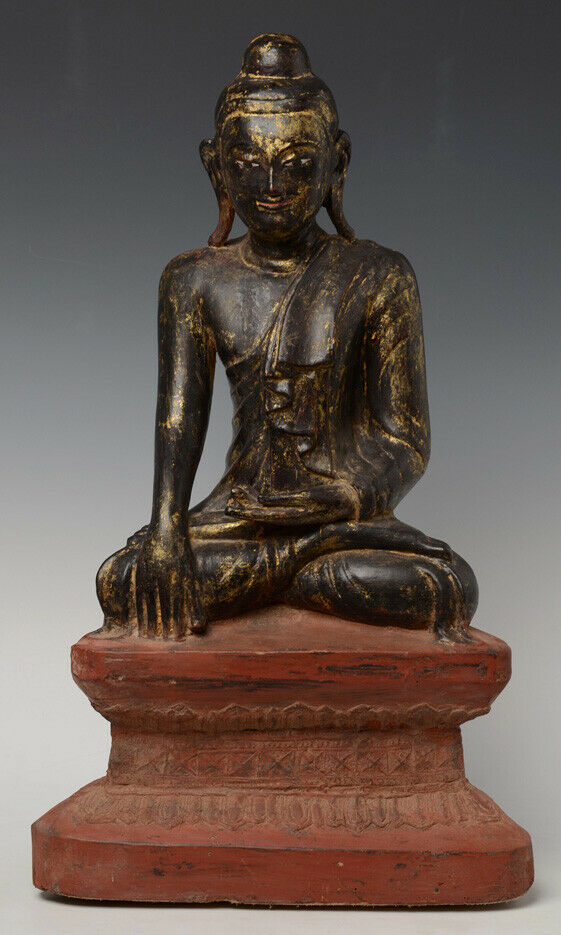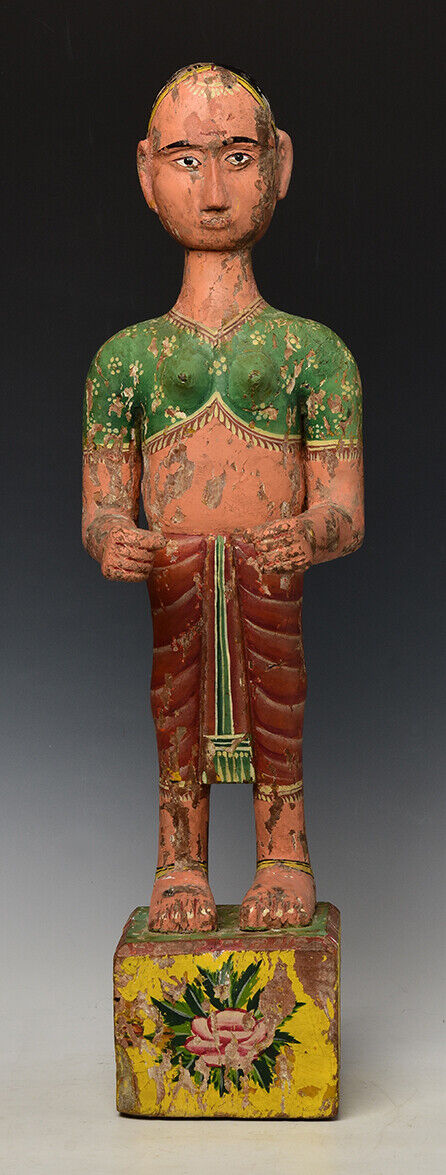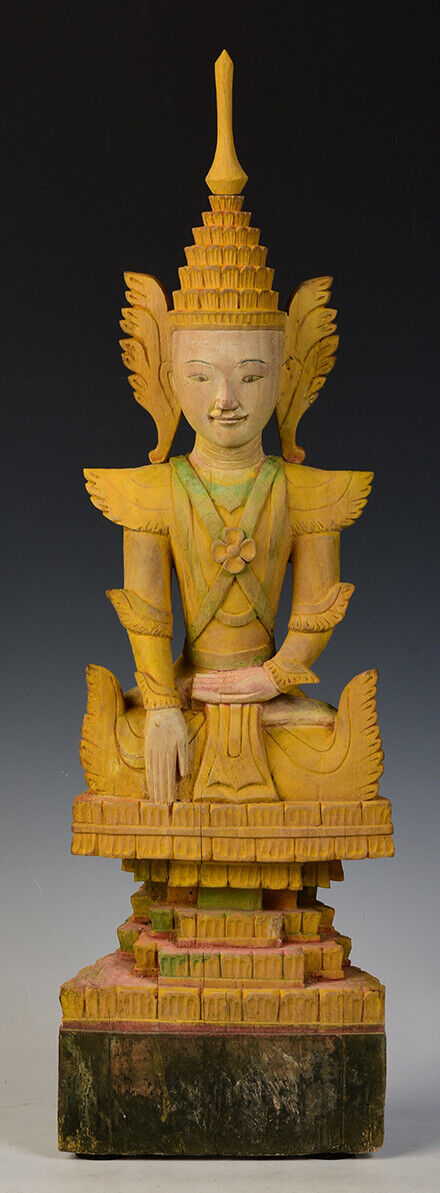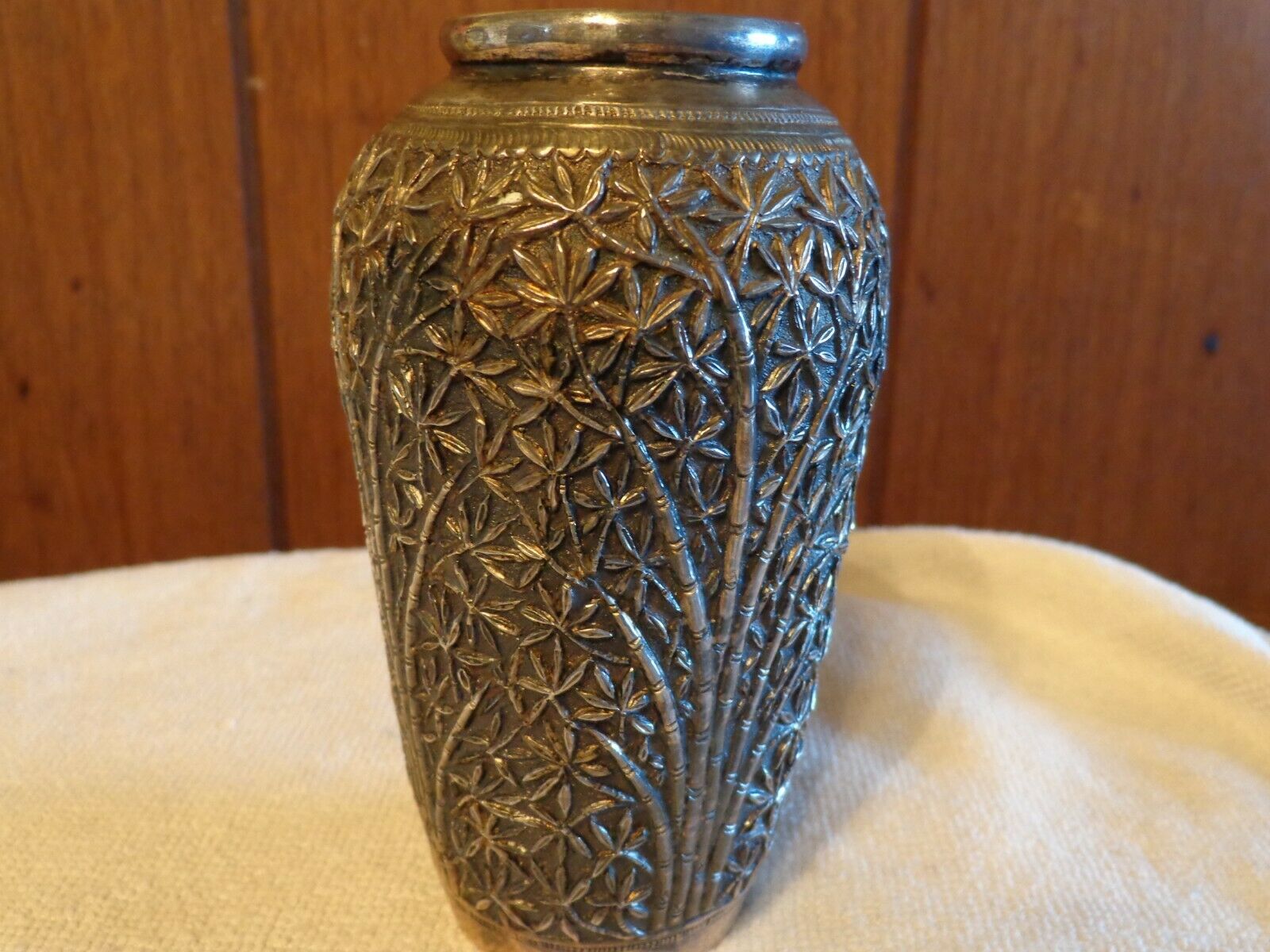-40%
Buddha Disciple Sariputra 19th C. Carved Gilt Wood Statue Burmese Buddhist Art
$ 366.96
- Description
- Size Guide
Description
Item: Antique, carved wooden statue with lacquer and gilding depicting Sariputra, the chief disciple of Siddhartha Gautama (Buddah). He was considered the most wise disciple, so he’s often depicted in this pose or manner whereas Buddah’s other disciple, Moggallana, is depicted with hands in a prayer gesture. Sariputra is a very inspirational figure in Buddhism because Buddha predicts in the Lotus Sutra that he will become a fully awakened Buddha one day named Flower Glow Tathagata. Sariputta was an Arhat, or one who’d achieved nirvana and was advanced in enlightenment. This is a rare item with the right combination of elements: the carving is masterful, the age is real, the red lacquer is the correct red color, the gilding is real gold and original, etc.
Provenance
: private collection (estate of) W. Joseph Duckworth, Main Line, PA, Board Member of Philadelphia museums and universities.
PLEASE SEE MY OTHER EBAY LISTINGS FOR A NICE SELECTION OF ART, ANTIQUES, AND COLLECTIBLES !!
Background
: Inspirational statues such as the item offered here were traditionally in the residences and temples of Buddhist monks. You can see a similar but larger statue online in the New York Times review of “Buddhist Art of Myanmar” at Asia Society. Myanmar is also known as Burma, so it would be alright to call this sculpture Burmese. While that country borders on countries such as India, Thailand and China, the art style may be traced back to people who migrated from Yunnan, China (very long ago).
The Buddhist Art Market
: In the upper echelon of the art business, an item should fit into at least one category that auction houses like Christie’s and Sotheby’s have established. What’s nice about the item offered for sale here is that it could fit into several areas of collecting, besides just “Asian Arts” which they have near me at Freeman’s auction in Philadelphia. In May, 2019, they had “Glories Of Buddhist Art” at Christie’s, Hong Kong. Also in 2019, Sotheby’s, NY had their “The Indian, Himalayan & Southeast Asian Art” auction. Sotheby’s also had a sale entitled “Images of Enlightenment: Devotional Works of Art & Paintings”. When most dealers think of Asian art, the first that comes to mind is maybe Japanese woodblock prints or something like that, but Buddhist art is definitely trending right now with all of these major sales taking place.
Burmese Art & Culture
: Most people in Myanmar (Burma) are of Chinese descent. The biggest group are the Bamar people (68% of the population) and then 10% of the population is Shan. Both groups and others trace their heritage back to Yunnan, China. When the Tai-Shan people left Yunnan, they spread out to Vietnam, Laos, Thailand, Burma and Assam. The name Shan comes from the same root word as Siam. They’re considered a Tai ethnic group, and within this group are the Dai people that still live in southern Yunnan, China. In Myanmar, the second biggest city is Mandalay and it’s the country’s cultural center. I know that from the 1880’s-1940’s, Burma was under British Colonial rule, so my guess is that during that time period a good bit of art was acquired and believe it or not Buddhist people like this because it spreads the word. Mandalay is in the north of the country, so once you get above that, it’s really the Himalayas and you’d have to hire guides to trek up there (it costs a few hundred dollars per day to do that). So, with Mandalay being a cultural center and the big city in the north, a lot of people and things ended up there including objects, Thai and Shan people who were artists, etc. Certain terminology in the art field seems ‘loose’ to me because you could say that an object is from the Shan Period or the Mandalay Period, but they can mean the same thing (same time, such as 1890, for example). Also, the art itself can be described as Shan style or Mandalay style (or other styles). As for the item offered here, I’d think that most people would safely call it Mandalay per the age and style, but there’s always room for research and investigating things further.












